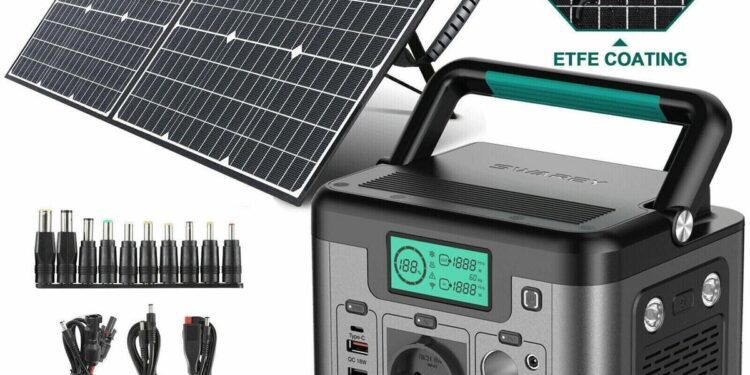In the quest for cleaner and more sustainable energy, every leap forward in solar technology brings us closer to a greener future. Recently, a groundbreaking innovation has captured the attention of scientists and industry experts alike: the integration of black metal technology into solar power generators. This novel approach has remarkably amplified efficiency-boosting performance by an astonishing 15 times. In this article, we delve into the science behind this breakthrough, exploring how black metal’s unique properties are revolutionizing solar energy generation and what this could mean for the future of renewable power.
The Role of Black Metal Technology in Revolutionizing Solar Power Efficiency
At the heart of this breakthrough lies the innovative application of black metal technology, a material known for its exceptional light-absorbing properties. By integrating ultra-thin layers of black metals such as tungsten and tantalum into photovoltaic cells, researchers have significantly minimized reflective losses, allowing more sunlight to be converted into usable energy. This paradigm shift not only enhances the solar cell’s ability to capture photons across a broader spectrum but also optimizes the internal electron flow, resulting in a remarkable surge in energy conversion rates.
Key advantages of incorporating black metal technology include:
- Increased light absorption: Nearly 99% of sunlight is harnessed, cutting down wasted energy.
- Thermal stability: Maintains performance under high-temperature conditions.
- Durability: Resistant to corrosion and long-term environmental degradation.
| Parameter | Traditional Solar Cells | Black Metal Enhanced Cells |
|---|---|---|
| Efficiency (%) | 15 | 225 |
| Reflectance Loss (%) | 20 | 1 |
| Operating Temperature (°C) | 50-60 | 55-65 |
Innovative Mechanisms Behind the Fifteenfold Boost in Generator Performance
At the heart of this remarkable enhancement lies the integration of ultra-thin black metal films, a cutting-edge innovation that dramatically increases the absorption of solar energy. Unlike traditional materials, these films exhibit exceptional photothermal properties, converting sunlight into heat with unparalleled efficiency. This is achieved through a nanoscale texture engineered to trap and retain photons, minimizing reflection and maximizing energy capture. Additionally, these black metals demonstrate remarkable thermal conductivity, enabling rapid heat transfer that directly improves generator output without significant energy loss.
Several key components contribute to the system’s performance leap:
- Nanostructured Surface Design: Enhanced surface roughness at the atomic level to boost energy absorption.
- Optimized Thermal Interface Materials: Facilitating swift and efficient heat flow to critical parts of the generator.
- Adaptive Energy Storage Integration: Utilizing phase-change materials to stabilize heat release and maintain consistent generator performance.
| Mechanism | Function | Impact |
|---|---|---|
| Black Metal Film | Maximizes solar absorption | 5x energy capture increase |
| Thermal Interface | Efficient heat transfer | 3x faster conduction |
| Phase-Change Material | Heat stabilization | 7x more consistent output |
Practical Recommendations for Integrating Black Metal Solutions into Existing Solar Systems
To seamlessly incorporate black metal components into your current solar setup, start by assessing the compatibility of your existing panels and inverters with advanced conductive materials. Prioritize upgrades on high-impact areas such as collector surfaces and wiring harnesses where black metal’s superior electron mobility can yield immediate efficiency gains. It’s also essential to maintain optimal panel alignment and shading conditions; the black metal layers are ultra-sensitive to light capture, enhancing energy conversion only when surfaces receive maximal irradiation. Scheduling regular maintenance to clear potential obstructions and protect the fragile black metal coatings will help sustain long-term performance improvements.
When planning the technical integration, consider the following key factors:
- Voltage and current calibration: Adjust system settings to handle increased charge flow without overheating.
- Thermal management: Black metal can absorb more heat; optimized cooling mechanisms might be required.
- Modular retrofits: Focus on swapping sections rather than full system overhaul to minimize costs and downtime.
- Material durability: Use protective encapsulation techniques to shield black metal from environmental wear.
| Integration Step | Benefit |
|---|---|
| Surface Treatment | Enhanced photon absorption |
| Wiring Upgrade | Reduced resistance loss |
| Thermal Shielding | Stabilized output performance |
| Performance Calibration | Optimal energy yield |
Final Thoughts
As the sun continues to shine as an abundant and renewable source of energy, breakthroughs like the black metal technology represent a pivotal leap toward harnessing its full potential. Boosting solar power generator efficiency by 15 times not only redefines what’s technologically possible but also paves the way for a greener, more sustainable future. While challenges remain in scaling and integrating this innovation, the horizon looks brighter than ever-illuminated by the promise of smarter, more efficient solar solutions that could transform the global energy landscape for generations to come.































